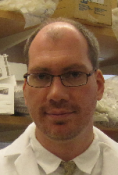Lost and Found: The Tale of Two "Cured" HIV Patients Who Reverted
(Podcast) Two years ago, two HIV-positive patients lost all signs of the virus, as far as doctors at Harvard Medical School could tell. Suddenly, months later, the virus returned in force. What happened, and what does it mean?
Two years ago the impossible seemed true: Two formerly HIV-positive patients lost all signs of the virus after stem-cell transplants.
Then virus titers returned. What happened? In this brief podcast, Timothy Henrich MD of Harvard University tells why these patients lost their HIV-free status (while another in Berlin apparently has not), and what this means for the future of HIV treatment and research.

Dr. Henrich is an infectious disease specialist and assistant professor of medicine at Harvard Medical School.
The questions:
We wd like to talk re about what's going on with several men who in 2012 it was announced had been HIV infected but then had no evidence of the virus after having bone marrow transplants. But more recently you and your colleagues announced that the virus had been found in tissue reservoirs. What's been going on?
Do you think the virus has mutated? Do you think it's going to be resistant to therapy? How are they doing on therapy now?
What's the implication of [the fact that virus titers rebounded so quickly after disappearing for a few months]?
You mentioned the Berlin patient. This is the patient who also has been effectively cured of HIV. The virus has not returned in this person, correct?
Is that a potential treatment strategy going forward, to find cells that are resistant to that strain and use that for bone marrow transplant?
Key quotes:
We were unable to detect HIV in peripheral blood and subsequently in gut tissue, despite looking at millions and hundereds of millions of cells... We felt it was justified to take them off therapy to see if and when HIV would return. ... At 3 months and 8 months, respectively, they essentially had no detectable HIV in the peripheral blood despite frequent weekly testing. .. Unfortunately, after 3 and 8 months the virus returned relatively rapidly in both patients.
I think that has a lot of implications for how we design and think about curative strategies and trials as we move forward.
Certainly, various individuals and research centers and hospitals are looking for potential donor cells that have [a] mutation that makes them resistant to HIV ... That said, the transplant itself should not be used even with these cells for treatment of HIV alone, simply because there's quite a bit of mortality and morbidity associated with the procedure.
References:
Henrich TJ, Hu Z, Li JZ, et al. Long-term reduction in peripheral blood HIV type 1 reservoirs following reduced-intensity conditioning allogeneic stem cell transplantation. J Infect Dis. (2013) 207:1694-1702.